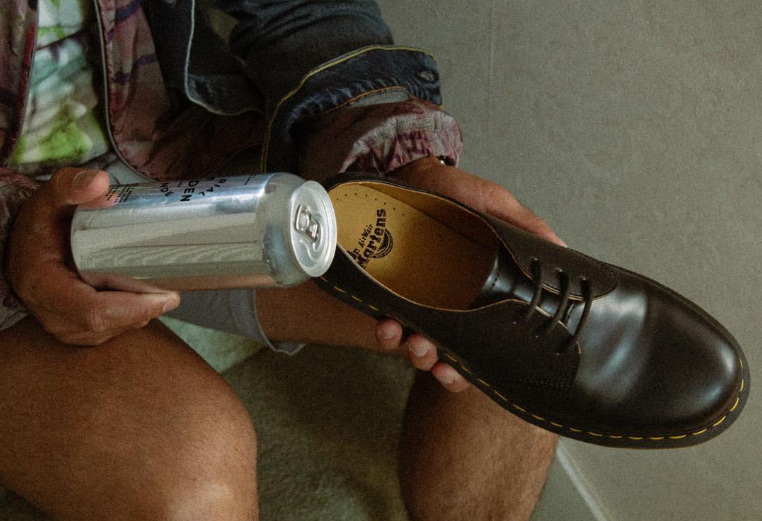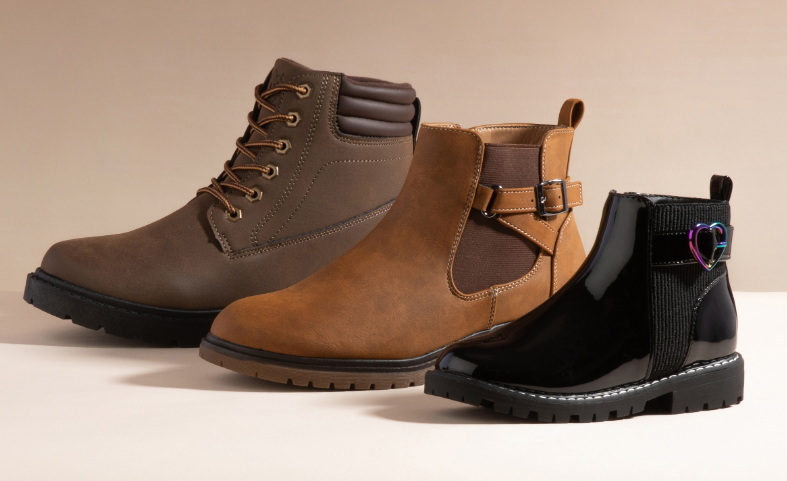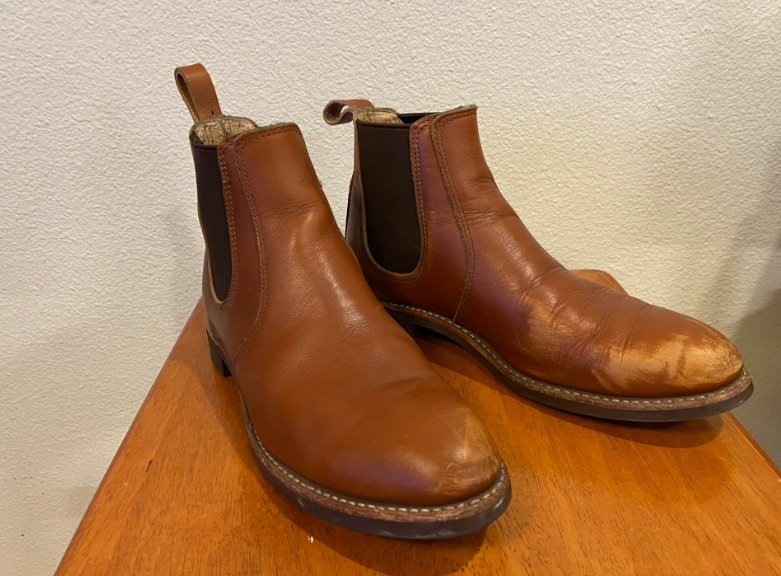Content Menu
● Understanding Chelsea Boot Sizing
● Different Sizing Options
>> UK Sizing
>> European Sizing
>> US Sizing
>> Half Sizes
● Measuring Your Feet for Chelsea Boots
● Key Fit Factors
>> Toe Space
>> Heel Fit
>> Elastic Panel Fit
>> Width
● Trying on Chelsea Boots
● What if Your Chelsea Boots Don't Fit?
>> Too Big
>> Too Small
● Conclusion
● FAQ
>> 1. How do I convert my US shoe size to UK size for Chelsea boots?
>> 2. What should I do if I'm between sizes?
>> 3. Can I wear orthotics with Chelsea boots?
>> 4. How do I know if my Chelsea boots are too big?
>> 5. How should Chelsea boots feel when I first try them on?
● Citations:
Chelsea boots have cemented their status as a versatile and timeless footwear choice for both men and women. Their sleek design effortlessly complements a wide range of outfits, making them a staple in many wardrobes. However, achieving the perfect look and comfort with Chelsea boots hinges on finding the right fit. This comprehensive guide will walk you through everything you need to know about sizing Chelsea boots, ensuring you step out in style and comfort.

Understanding Chelsea Boot Sizing
Chelsea boots are designed to have a snug fit around the ankle and foot, providing a streamlined silhouette[1]. Unlike laced boots, Chelsea boots rely on elastic side panels to provide flexibility and ease of wear. This design means that getting the correct size is crucial for both comfort and aesthetics.
Chelsea boots typically fit true to size[1]. However, variations can occur between brands, so it's always best to consult the brand's specific sizing guide before making a purchase[10]. Different sizing systems, such as UK, US, and European, can also add to the confusion.
Different Sizing Options
UK Sizing
The UK sizing system is based on the length of the foot in inches[1]. Each size incrementally increases by one-sixth of an inch. For example, a UK size 7 is approximately 10.5 inches long, while a UK size 8 is around 11 inches long[1]. It's worth noting that UK sizes are typically smaller than their US counterparts, so it's important to convert your size accordingly if you're used to the US sizing system[1].
European Sizing
The European sizing system is based on the length of the foot in centimeters[1]. European sizes are typically denoted by a number, with each size incrementally increasing by 0.66 centimeters. For instance, a European size 40 is approximately 25.6 centimeters long, while a European size 41 is around 26.3 centimeters long[1]. It's important to note that European sizes can vary slightly between different brands, so it's always a good idea to consult the brand's specific size chart for accurate measurements[1].
US Sizing
The US sizing system is commonly used in North America. While it is similar to the UK system, there are notable differences. For men's sizes: US = UK + 1, approximately. So a US size 8 would be a UK size 7. For women's sizes, the difference is greater. Always refer to a conversion chart to ensure you get the correct size.
Half Sizes
In addition to the standard UK and European sizing options, some brands also offer half sizes for Chelsea boots[1]. These half sizes can provide a more precise fit, especially for individuals with feet that fall between two whole sizes[1]. Opting for a half size can help ensure that the boots fit comfortably without being too tight or too loose[1].
Measuring Your Feet for Chelsea Boots
To ensure the ideal fit, accurately measuring your feet is essential[1]. Here's how to do it:
1. Gather Your Tools[4]:
- A piece of paper
- A measuring tape or ruler
- A pen or pencil
2. Trace Your Foot[7][8]:
- Place the paper on a flat surface against a wall[4][8].
- Stand on the paper with your heel against the wall, ensuring your weight is evenly distributed[1].
- Trace the outline of your foot, marking the tip of your longest toe and the back of your heel[4][7].
3. Measure the Length[1]:
- Use the measuring tape to measure the distance between the heel and the toe markings[1].
- Record the measurement in both inches and centimeters.
4. Measure the Width[1]:
- Wrap the measuring tape around the widest part of your foot, typically the ball of your foot[1].
- Ensure the tape is snug but not too tight[1].
- Record this measurement.
5. Compare with a Size Chart[1]:
- Consult the brand's specific size chart, comparing your measurements to their sizes[1].
- Keep in mind that sizes can vary between brands, so always refer to the specific chart[1].

Key Fit Factors
Toe Space
There should be enough room to wiggle your toes without them sliding forward[5]. A thumb's width of space between your longest toe and the front of the boot is a good guideline[5].
Heel Fit
The boots should cradle your heels without them slipping as you walk[5]. A snug and secure fit is essential to prevent discomfort and blisters[6].
Elastic Panel Fit
The elastic side panels should sit comfortably against your ankles without pinching or gaping[5]. A secure fit ensures the boots are easy to take on and off while maintaining a sleek appearance[5].
Width
The boots should hug your feet without squeezing[5]. If your feet feel cramped, consider trying a wider fit[5]. Some brands offer narrow, regular, and wide options to accommodate various foot shapes[1].
Trying on Chelsea Boots
When trying on Chelsea boots, consider the following tips to ensure the best fit:
1. Try Them On in the Afternoon: Feet tend to swell throughout the day, so trying on boots in the afternoon helps avoid buying boots that are too small[8].
2. Wear the Right Socks: Always try Chelsea boots with the type of socks you plan to wear regularly[5]. Thicker socks may require a half-size up, while thinner socks work well with true-to-size fits[5].
3. Walk Around: Be sure to walk around in the boots to ensure you have the correct size[8]. Your feet usually increase by up to two sizes when you stand up[8].
4. Check for Slippage: Pay attention to any heel slippage[10]. A small amount (about 1/4 to 1/2 inch) is normal in new Chelsea boots, but excessive slippage indicates the boots may be too large[10].
5. Assess Overall Comfort: The boots should feel snug but not uncomfortably tight when new[10]. A slight resistance when putting them on is normal, but you shouldn't have to force your foot into the boot[10].
What if Your Chelsea Boots Don't Fit?
Too Big
If your Chelsea boots are too big, there are several ways to improve the fit:
- Tongue Pads: Use pedag Supra tongue pads to fill extra space under the boot's instep. These pads stick under the boot's insole to fill that extra space[9].
- Insoles: Add another insole to take up extra volume inside the boot[9]. Leather insoles are a good option.
- Thick Socks: Wear thicker socks to fill up some of the extra space.
Signs that your Chelsea boots are too big include excessive heel slippage, your foot sliding forward in the boot when walking, and visible gaps around the ankle area[10]. If you can easily fit more than one finger between your heel and the back of the boot, they're likely too large[10].
Too Small
If your Chelsea boots are too small, there are also several potential solutions:
- Boot Stretcher: Use a boot stretcher to gently stretch the boots[5].
- Wear Them In: Leather boots will typically stretch and mold to your feet over time, so a initially snug fit is often ideal[10]. Wear them around the house with thick socks to help speed up the process.
- Professional Stretching: Take the boots to a professional shoe repair shop to have them stretched.
Conclusion
Finding the perfect size for Chelsea boots is crucial for both comfort and style. By accurately measuring your feet, understanding different sizing systems, and considering key fit factors, you can confidently choose boots that fit well and enhance your overall look. Remember to consult brand-specific size charts and try on boots with the socks you intend to wear. With the right fit, Chelsea boots can be a comfortable and stylish addition to your wardrobe, suitable for various occasions and outfits[10].

FAQ
1. How do I convert my US shoe size to UK size for Chelsea boots?
To convert your US shoe size to UK size, subtract 1 from your US men's size. For example, a US men's size 9 is approximately a UK size 8. For women's sizes, the conversion difference is usually greater, so consulting a size chart is important[1].
2. What should I do if I'm between sizes?
If you're between sizes, it's generally recommended to opt for the half size[1]. This ensures a more comfortable fit without being too tight or too loose. You can also consider the width of your feet; if you have wider feet, sizing up might be necessary[1].
3. Can I wear orthotics with Chelsea boots?
Yes, you can wear orthotics or insoles with Chelsea boots[10]. If you plan to use inserts, bring them along when trying on boots. You may need to size up to accommodate the extra thickness or look for boots with removable insoles that can be replaced with your custom orthotics[10].
4. How do I know if my Chelsea boots are too big?
Signs that your Chelsea boots are too big include excessive heel slippage, your foot sliding forward in the boot when walking, and visible gaps around the ankle area[10]. If you can easily fit more than one finger between your heel and the back of the boot, they're likely too large[10].
5. How should Chelsea boots feel when I first try them on?
Chelsea boots should feel snug but not uncomfortably tight when new[10]. A slight resistance when putting them on is normal, but you shouldn't have to force your foot into the boot. Remember that leather boots will typically stretch and mold to your feet over time, so a initially snug fit is often ideal[10].
Citations:
[1] https://coveti.com/how-do-chelsea-boots-fit-on-men/
[2] https://www.portlandleathergoods.com/pages/mens-chelsea-boot-size-guide
[3] https://www.youtube.com/watch?v=PIP1EfiFFU4
[4] https://www.youtube.com/watch?v=Kg4XSplwXac
[5] https://www.pavers.co.uk/blogs/how-should-chelsea-boots-fit
[6] https://www.youtube.com/watch?v=V_AsxR9huX4
[7] https://penelopechilvers.com/blog/how-to-measure-your-boot-size-at-home
[8] https://chelseabootstore.com/size-guide/
[9] https://www.youtube.com/watch?v=SOcwD5_2k1U
[10] https://www.yinghuafootwear.com/how-should-a-chelsea-boot-fit.html
[11] https://stridewise.com/how-boots-should-fit/
[12] https://www.shoezone.com/Blog/the-low-down-on-chelsea-boots
[13] https://www.reddit.com/r/Boots/comments/18fzehu/chelsea_boots_sizing/
[14] https://www.drmartens.com/us/en/shoe-size-guide
[15] https://www.ahume.co.uk/blog/chelsea-boots-the-ultimate-buyers-guide/
[16] https://www.blundstone.com/size-guides
[17] https://www.rmwilliams.com/care-guides/Shoe-size-guide.html?lang=en_US
[18] https://www.gaborshoes.co.uk/blog/2023/12/how-should-chelsea-boots-fit-a-complete-comfort-guide/
[19] https://www.8000kicks.com/pages/chelsea-boots-size-chart
[20] https://bootspy.com/how-should-chelsea-boots-fit/
[21] https://www.youtube.com/watch?v=SijqG7JEBow
[22] https://www.youtube.com/watch?v=boitFyb_rp0
[23] https://www.merricksart.com/how-to-wear-chelsea-boots/
[24] https://www.youtube.com/watch?v=nVFOEzYW19c
[25] https://www.youtube.com/watch?v=TEpxtsdMhXE
[26] https://www.vogue.com/article/chelsea-boots
[27] https://www.tiktok.com/@bootspyofficial/video/7322467529681554734
[28] https://www.youtube.com/watch?v=Iwf_RXHaCvs
[29] https://www.gentlemansgazette.com/chelsea-boots-guide/
[30] https://www.youtube.com/watch?v=agt1p0wxpbY
[31] https://www.youtube.com/watch?v=avlJid3r-tk
[32] https://barefootshoeguide.com/best-barefoot-chelsea-boots/
[33] https://www.overlookboots.com/blogs/boots/boot-size-guide
[34] https://chelseacrew.com/pages/size-chart
[35] https://www.jenonleather.com/how-to-measure

















